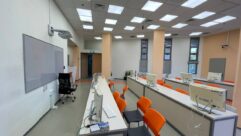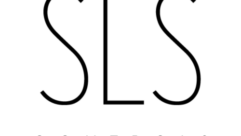
New Screen Technology, Products Moving into Churches
Jun 15, 2006 8:00 AM
Houses of worship are increasingly relying on projection screens to make a more active contribution to the quality of their video presentations.
Houses of worship are increasingly relying on projection screens to make a more active contribution to the quality of their video presentations, and screen makers are responding with both new products and more guidance to worship ministers on how to get the most from this system fundamental.
Among the major trends in worship video today, says Kevin Baisley, vice president of sales and marketing at Vutec in Pompano Beach, Fla., is a move to wider screens. “We’re seeing a trend to 16:9 and high definition,” he reports. “As churches continue to want to deliver more progressive content, they are playing more diverse materials. Right now, we see not more than 20 percent penetration of 16:9. However, a lot of the new installs going in are increasing to the 16:9 format. By the end of next year, you’re going to see a lot more 16:9 than 4:3.”
Mitigating this trend, though, is the ongoing reliance of churches on projected content in the 4:3 aspect ratio, such as PowerPoint slides and output from a variety of worship software programs. “The software they use, the text-over-video and so on, is locked into 4:3 now, but they will be converting soon,” Baisley says.
Rear projection is especially popular in new construction, where the necessary behind-screen space can be designed in. Jim Hoodlebrink, information display systems product manager at Draper, Spiceland, Ind., says rear projection is valuable as a means of minimizing the impact of ambient light on the projected image. “Uncontrollable ambient light will wash out front projection, sometimes making it difficult to see the image,” he comments.
Tom Stewart, vice president and owner of Stewart Filmscreen, also recommends rear projection where feasible, often using a mirror system to “fold” the optics and save space.
Stewart also notes that the choice of screen material can help brighten an image and combat the bright light that’s so common in church sanctuaries.
“The bigger the desired image size the more ANSI lumens output is required from the projector,” he says. “The best front-projection screen fabric for the church market is a neutral-density gray screen, as the gray enhances the black levels of the image and gives you better image contrast.”
Baisley says integrators and designers concerned about image brightness should look at screen materials other than the standard matte white he says represents more than 90 percent of the market.
Screen materials are now available that provide greater gain than matte white—that is, the screen will actually add brightness to the image it reflects back at the audience. “A high-gain screen can make a low-lumen projector look better,” says Baisley.
This approach can appeal to budget-challenged churches, he adds. “A good projector is going to cost $4,000 to $5,000, and if you go to 16:9, a little more,” he says. A smart screen choice can help get more impact from a less costly projector.
Some churches are also increasingly using their video screens to mask clusters of loudspeakers or other esthetically unappealing elements. Baisley sees growing interest in acoustically transparent screens, which “have the same gain characteristics as matte white, but allow audio to penetrate.”









